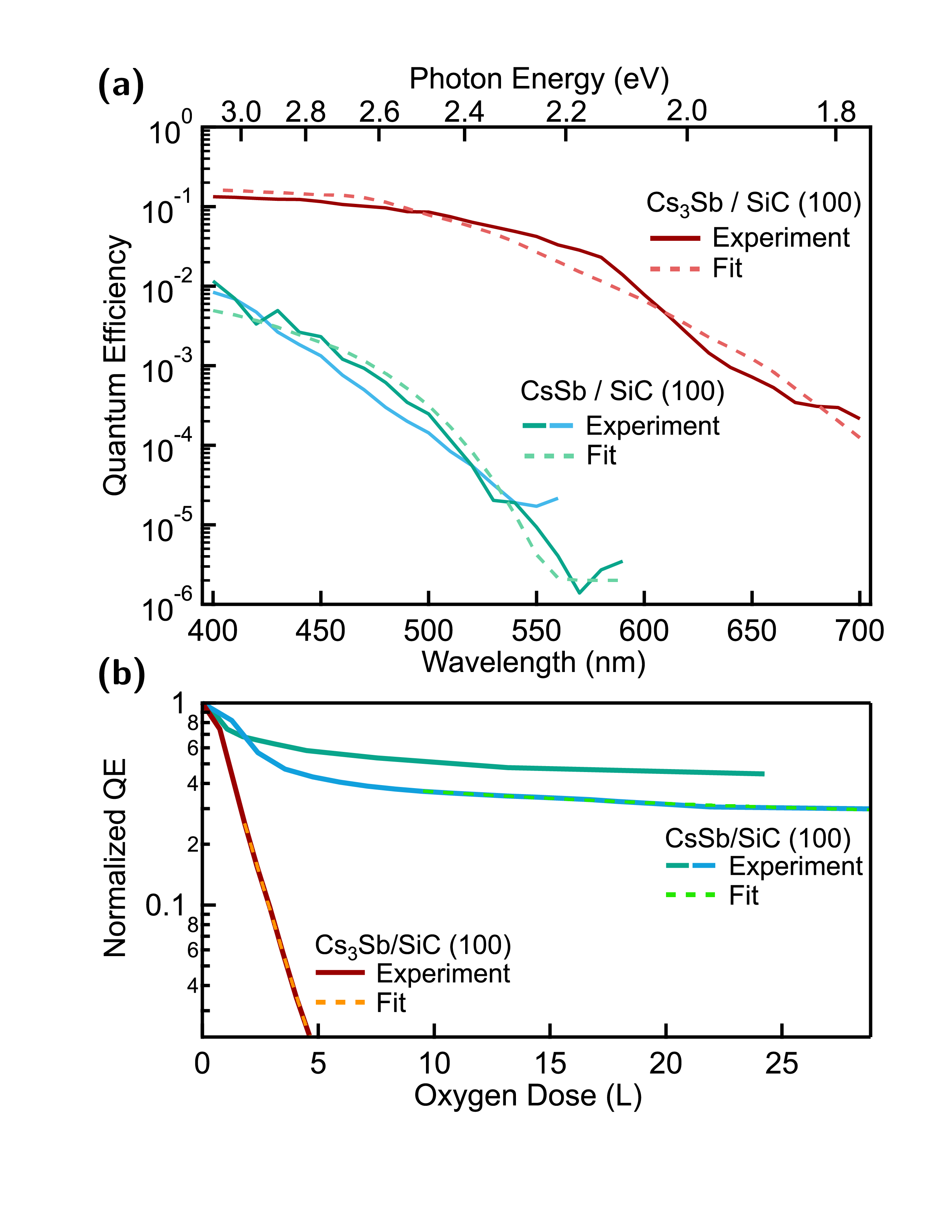Unlocking the Potential of CsSb Thin Films for High-Brightness Electron Beams
High brightness electron beam sources are a key ingredient in next-generation applications which require high charge and ultrashort electron pulses; ranging from ultrafast electron microscopes to x-ray free electron lasers. Alkali antimonide photocathodes, XY2Sb with X,Y=Cs,K,Na,…, provide a promising platform for the generation of such high brightness beams; however, there are major challenges in both the synthesis and operation of most alkali antimonides which currently limit their widespread adoption: primarily their chemical reactivity. This can dramatically limit their operational lifetime and stymie chemical and structural analysis during sample optimization. The rapid degradation of most alkali antimonide films in anything less than ultra-high vacuum conditions places stringent requirements on the systems in which they may be operated.
Here, we investigate the growth of CsxSb photocathodes over a variety of compositions, 1in situ electron diffraction, we identify the growth conditions for atomically smooth CsSb films on substrates including 3C-SiC (100) and graphene-coated TiO2 (110). A variety of in situ probes including XPS, ARPES, and STM provide a comprehensive picture of the structural, morphological, and electronic properties of the resulting films. We find that CsSb exhibits high quantum efficiency in the visible spectrum (up to 1.2% at 400 nm), a readily accessible photoemission threshold of 550 nm, and a remarkably low surface roughness (as low as 600 pm on a 1 μm scale). Perhaps most importantly, we demons
trate that this phase exhibits an impressive resistance to oxidation, surpassing Cs3Sb by a factor of up to 15.
These findings demonstrate CsSb as a compelling alternative to Cs3Sb in electron source applications where harsh vacuum conditions may otherwise preclude the use of alkali antimonide photoemitters. This research paves the way for the development of smoother, more robust visible light photoelectron sources which may accelerate the development of next-generation high brightness electron beams.
Reference:
C. T. Parzyck, C. A. Pennington, W. J. I. DeBenedetti, J. Balajka, E. Echeverria, H. Paik, L. Moreschini, B. D. Faeth, C. Hu, J. K. Nangoi, V. Anil, T. A. Arias, M. A. Hines, D. G. Schlom, A. Galdi, K. M. Shen, and J. M. Maxson, “Atomically smooth films of CsSb: a chemically robust visible light photocathode.” arXiv:2305.19553 [cond-mat, physics:physics], May 31, 2023. doi: 10.48550/arXiv.2305.19553. Available: http://arxiv.org/abs/2305.19553

